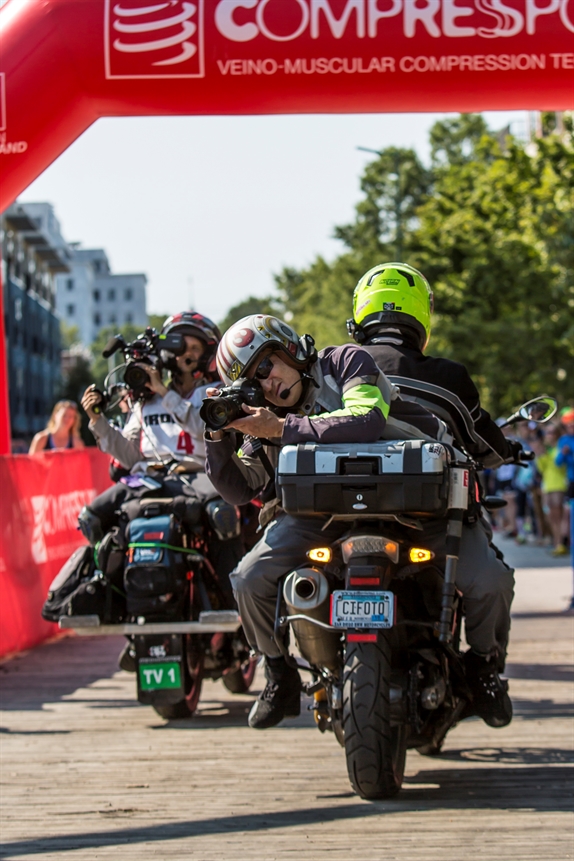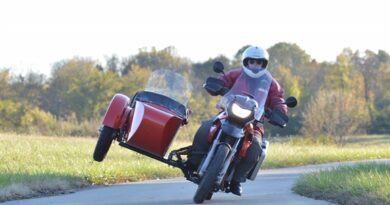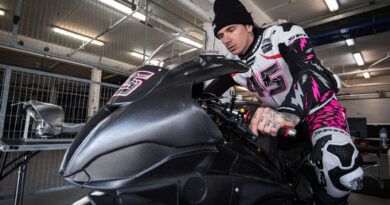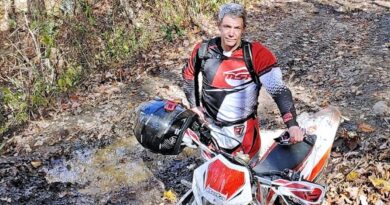BMWs at the races
It’s 9:00 on Saturday, October 14 on the Kona coast of the Big Island of Hawaii. The heat is starting to build, passing through the low 80s, and I have been on the motorcycle for about an hour.
The amazing views of the Pacific and the lava fields are familiar from the dozen or so times I have ridden here before, but today is different. We are alongside the best endurance athletes in the world and I am not driving.

We are about 40 miles into the bike course of the Ironman World Championship. I am on the back of a Yamaha FJ-09, facing backwards with two cameras and three extra lenses, shooting for Triathlete Magazine and other publications. Unfortunately, there was not a single BWM in the island to rent.
Even with Yamaha’s 850cc triple, we scramble to keep up.
Brian Sheehy, who I met through BMW MOA, is my pilot. He took time off from his job as a police motor officer in Madison, Wisconsin, to be my teammate.
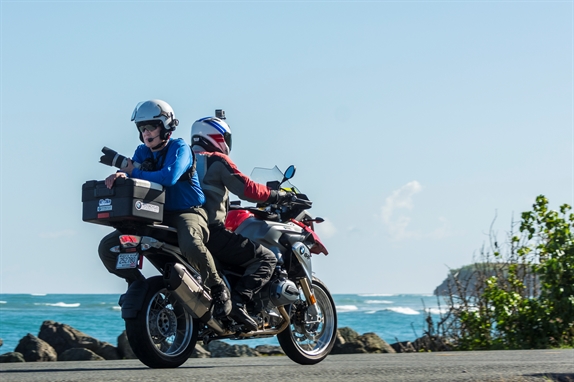
When people see me sitting backwards I get some great comments. People say it looks like fun (it is!), wonder if I trust the rider (I do!) and occasionally ask if I’m crazy. It’s highly likely, I tell them.
I have shot over 200 major events since 2002 as an endurance sports photographer. My pilot Brian is a professional driver and I guess I am a professional passenger. I have best seat in the house and while it can be a very long day, how many people have a day job where you can be riding, taking photos and hanging out with great athletes all at the same time?

It is a small group that travels to shoot the major events. We are all great friends and work cooperatively so we can get our shots and fulfill our assignments. It might sound pretty glamorous, but it is more like a traveling carnival. I love what I do, but sometimes I wonder if I am there to shoot or just hang out with my motorcycle buddies.
What changes week to week are the drivers; in the U.S. there are just a few groups of professional drivers. Most of them are current or retired motor officers or state troopers. For the most part, the drivers are volunteers.
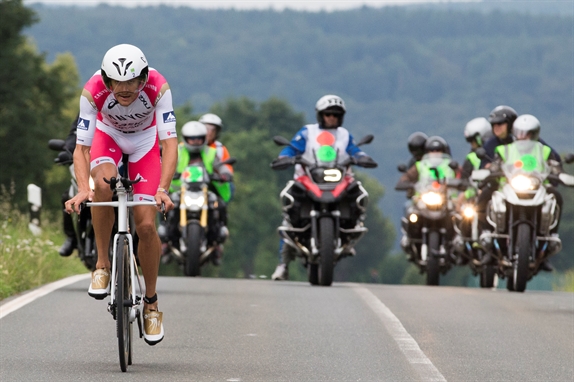
In mid-August, I got a call from Jimmy Ricatello. Jimmy is the head referee for all of the Ironman events. With the Half-Ironman World Championship coming up in a few weeks in Chattanooga, Jimmy was worried that we wouldn’t have enough good drivers, and hoped I knew a guy. I know hundreds. With the help of Justin Prann of Pandora Motorsports in Chattanooga and the BMW clubs in Chattanooga, Knoxville and Georgia, we were able to recruit 12 of the 43 drivers needed for the two-day event involving over 4,000 athletes.
The Chattanooga course was a challenge, featuring narrow, twisty roads with no shoulders. Most of the bike route was in Georgia, where the State Patrol did not close the road to traffic; we could not cross the center line to shoot or maneuver. Challenging, but just the sort of thing that makes us as riders smile and say: I got this!
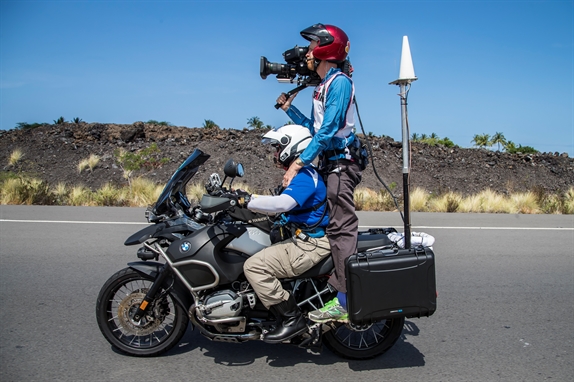
The MOA guys were rock stars. Knowing we couldn’t cross the double yellow line, I saw lots of our guys riding for miles between the double yellow. Great skills and even better attitudes.
Beyond the media drivers, even more drivers are needed for race officials, race marshals and technical support. With as many as 30 drivers needed at an event, it is a great opportunity for volunteer drivers to join in the excitement.
Most of the publicity goes to the pros, but 95 percent of the participants are amateurs or age-group athletes. At any given Ironman event, there are between 50 and 100 professional athletes followed by 2,000 age-group athletes who race on the same course at the same time as the pros. Most of us will never have the chance to play basketball on the same court as LeBron James, but as a triathlete, you can race in the same event as the world’s best. This makes Ironman competitions unique in the world of sports. I hope that sounds like as much fun as it is. It is even better if you are with us in mix of things.
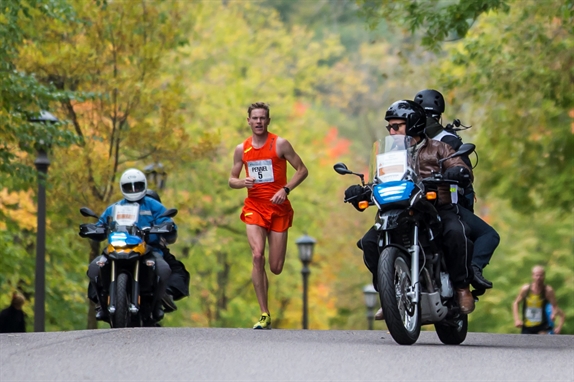
Even if you only look at the 14 full-distance races (2.4-mile swim, 112-mile bike and a 26.2-mile marathon run for a total of 140.6 miles) and 36 half-distance events (known as 70.3s because they are half the distance of a full-distance Ironman) that are part of the North American Ironman circuit, there are enormous needs for great drivers. For us that means there are lots of great opportunities to both have the best seat in the house and have great fun on the course.
All of us accept certain risks when we head out for a ride; the good news is as long as you register with Ironman before the race, you are covered by Ironman’s insurance.
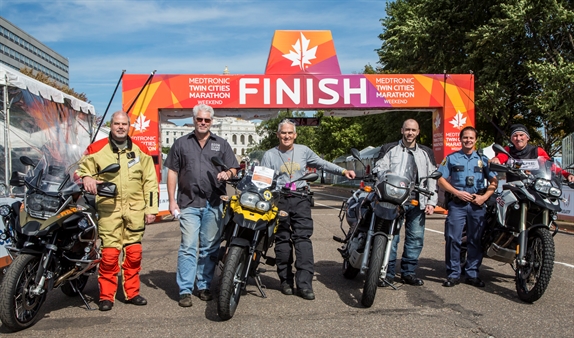
My goal is to create a national list and to have MOA represented at every major race in the United States. My sense that you will think it is as much fun as I do. If you do, reach out to me at [email protected] and I will help make the right connections.
